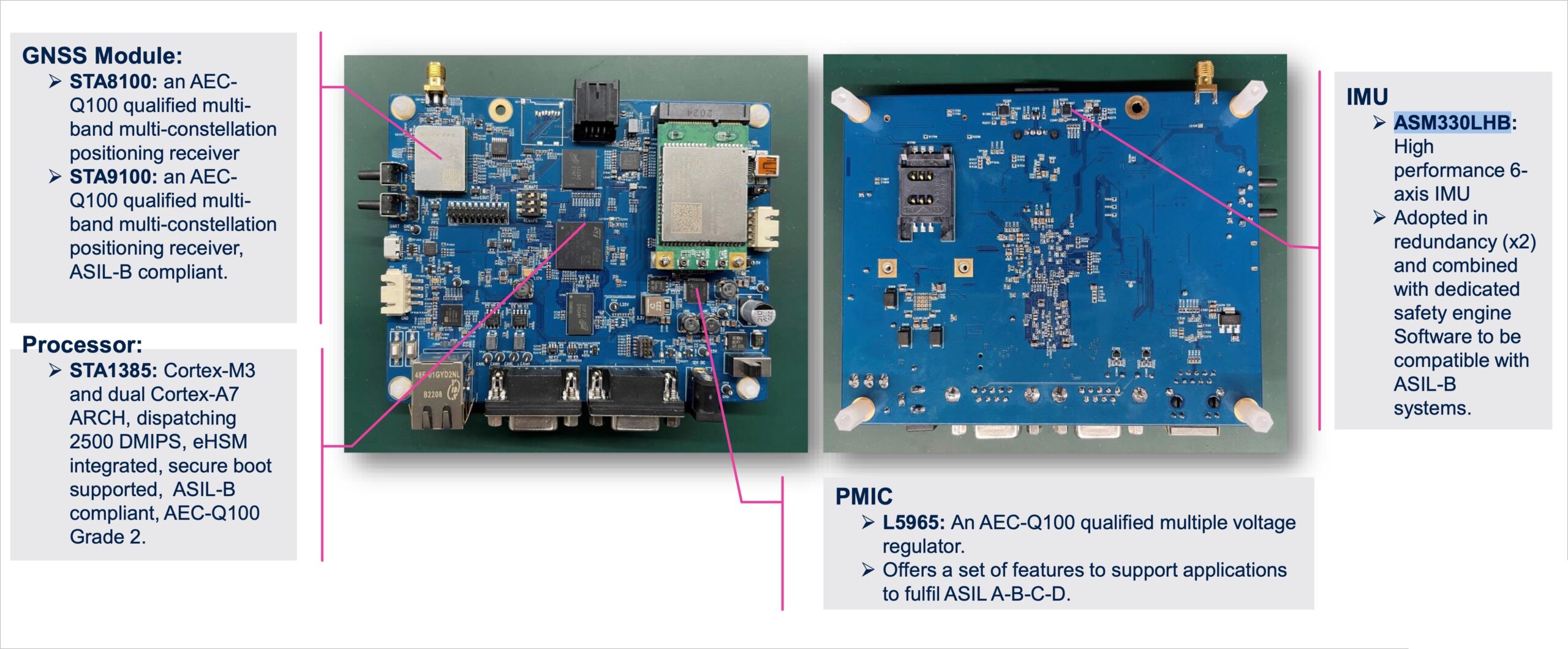ST will attend electronica South China 2022 and have a booth at the event in Shenzhen from November 15 to November 17, 2022. Besides the numerous demos and the legion of experts we will have at the event, ST will also give two speeches. One will be on STM32 and wireless connectivity for IoT systems. The other is on wide bandgap devices like silicon carbide and gallium nitride and their impact on carbon neutrality. There will also be presentations on smart mobility, IoT, connectivity, power, and motor control. From smart homes to smart factories and smart cars, the goal is to ensure that many new applications start their journey at electronica South China 2022.
The event is an opportunity to showcase new reference designs and connect with our community in this region. Indeed, another electronica event is taking place simultaneously in Germany. Yet, ST made electronica South China a priority by bringing some of its latest innovations, like its OLED driving solution for headlights and the first dual-motor servo we just inaugurated at the Industrial Summit 2022. Our booth at electronica South China is thus a testament to ST’s desire to reach out to the region’s tech leaders by showing them how they can rapidly adopt the latest trends. Let us, therefore, explore three impressive demonstrations we will have on the ST stand.
1. High-precision positioning platform (P-Box)
What is RTK?
The P-Box is making its debut at electronica South China 2022 and distinguishes itself by offering centimeter-level global positioning precision thanks to real-time kinematic (RTK) algorithms. In a nutshell, RTK measures the time satellite signals need to reach the receiver. The receiver can then determine its position by determining the distance between the receiver and various satellites in orbit. The technology isn’t new and was predominantly employed in surveying, construction, or drones. And now, autonomous driving requires extreme accuracy with an error margin of fewer than 30 centimeters. Comparatively, lane-based navigation only needs a precision of about a meter. Combining RTK with other positioning technologies thus solves this technological challenge.
Why does the P-Box stand out?
ST’s high-precision positioning box relies on the STA9100 as a multi-band GNSS receiver and the STA1385 to run the positioning algorithm. The STA9100 is the first GNSS receiver to be ASIL-B compliant. Additionally, since the STA1385, the power management IC (L5965), and the two inertial sensors ( ASM330LHB) can support an ASIL-B application, the P-Box represents a reference design that would meet the safety requirements for automotive. The P-Box also has a time to first fix of 28.2 seconds in 50 cold start cycles for horizontal positioning. Comparatively, most reference designs hover at around 35 seconds. Hence, the numbers show that the P-Box is precise and fast.

2. Wireless 3D holographic display
ST will showcase a holographic display, developed by DSeeLab, using an LED strip rotating quickly to display an image in mid-air. However, the innovation isn’t this fascinating display itself but the fact that the communication between the stationary base and the rotating LED strap is entirely wireless. A wireless charging system powers the device, and an ST60A2 wirelessly sends the video data using a 60 GHz transmission.
The demo shows that the solution provides enough bandwidth to display a 1024 x 1024 3D image while rotating at 750 rpm. The ST60A2 can support data rates of up to 6.25 Gbps with latency in the nanoseconds only. Hence, companies looking to transmit data rapidly without wires or connectors can explore a new paradigm at electronica South China 2022.
3. BlueNRG-LPS Direction Finding Demonstrator
The demo shows how engineers can use a Bluetooth Low Energy device to track a product’s position. The application is new, and we are taking advantage of electronica South China 2022 to introduce it to the Asian market. The demo enables applications to estimate the location of a BlueNRG-LPS-based beacon tag by using the BlueNRG-LPS locator with an antenna array. One locator, also called an anchor, can show the direction of the tag compared to its own position. The information coming from two or more locators can be combined to estimate the tag’s position.
